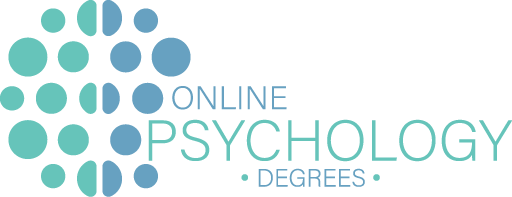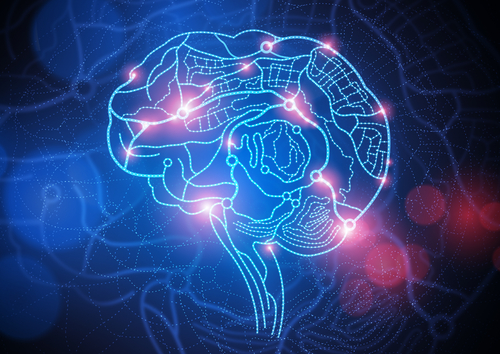Posted November 2019 by M.S. Broudy, B.A. English, B.A. Psychology; M.A. Social Psychology; Ph.D. Psychology; 7 updates since. Reading time: 6 min. Reading level: Grade 9+. Questions on the Human Connectome Project? Email Toni at: editor@online-psychology-degrees.org.
What is the Human Connectome Project (HCP)?
The Human Connectome Project started in 2010 with funding from the National Institutes of Health (NIH), is a comprehensive research study designed to map the neural connections that make up brain function and ensuing human behavior. The main data collection was conducted over five years (2012-2017) but aspects of the project remain ongoing.
What is a Connectome?
A connectome refers to the interconnected network of neurons in your brain. In other words, it is a wiring map of the brain. More specifically, it shows how fibers flow through the white matter of the brain to form connections between gray matter. For those that may not remember biology class, white matter’s main function is to facilitate communication between the neurons located in regions of grey matter. Grey matter is where most of the neurons are located and is responsible for sensory functions, such as seeing and hearing.
What are the Goals of the Human Connectome Project?
The questions that will be eventually answered as a result of the data acquired through the project are too innumerable to describe here. However, there are two general short-term objectives of the HCP:
- Optimize the technology necessary for accurate mapping and analyzing the neural pathways in the brain.
- Map brain function in healthy adults to ascertain common neural pathways and brain structure.
Who is Conducting This Research?
NIH awarded the Human Connectome Project to a consortium of schools. The first part of the project is led by Washington University, the University of Minnesota, and Oxford University (the WU-Minn consortium), and the other part is led by Massachusetts General Hospital and the University of California Los Angeles (the MGH-UCLA consortium). Additionally, there are many other investigators and institutions involved; it is truly an immense study. The WU-Minn consortium has focused on the actual mapping of participants while the MGH-UCLA group is concentrating on optimizing neuroimaging technology.
Participants
Participants were made up of a total of 1,200 healthy volunteer adults (22-35 years of age), many of whom were twins and their siblings. Twins were used as subjects to help study the inheritability of brain circuitry. Every participant had their brain mapped, allowing scientists to evaluate how genes may affect individual brain pathways. Each participant also completed surveys and tests to measure genetic, behavioral, and demographic data.
Advances in Neuroimaging Technology
A study of this kind would not have been possible 20 years ago. It has only been recently that neuroimaging technology has enabled the scientific community to see brain connections in such depth. The study used four imaging modalities: structural MRI, resting-state fMRI (rfMRI), task fMRI (tfMRI), and diffusion MRI (dMRI). All participants were scanned using all modalities on a customized 3T scanner at Washington University. Two hundred of the same subjects were also scanned on a 7T scanner at the University of Minnesota. During the first two years of the study, considerable time was spent improving the quality of the imaging scanners. In addition, the MGH/UCLA consortium built a custom scanner, named the “connectome scanner” with advanced diffusion MRI technology that provides 10 times more detail than conventional scanners.
Data Collection and Sharing
One of the mandates of the HCP was to make its data freely available to the scientific community. This was not just to include raw numbers but also data that had already been analyzed and interpreted. For example, HCP provides brain imaging maps of functional connectivity for public consumption. In order to meet the mandate, the team needed to create a database—ConnectomeDB—that could be easily mined for data by outside researchers. It is fair to say that the HCP is one of the first large-scale attempts to collect and share data in such a manner.
Initial Findings
With the data collection portion of the project complete, research based on the data has begun. Here are some critical early research findings:
- Brain fibers are organized into an orderly 3D grid, that run horizontal and perpendicular to each other, rather than randomly strewn together like a ball of yarn.
- Researchers have identified 180 distinct areas per hemisphere in the brain’s cortex, which is more than twice the number previously known. They have even been able to map them to show their locations within the brain. It is hoped that this information will contribute to our understanding of each of the area’s roles in human functioning and disease.
- Different people’s brains can react differently when performing the same task. Researchers hypothesize that it is due to inherent differences in the brain rather than using different behavioral strategies.
- Individuals who are more likely to experience anxious or depressed mood have fewer connections between the amygdala and areas related to attention, implicating the amygdala in mood function.
- How our brain is wired appears to play a role in whether or not we possess positive behavior traits, such as satisfaction level and higher education. This finding implies that some people are more hard-wired for success than others. It begs some important questions: Is our happiness with life predetermined? Do we have control over our personality?
Future Directions
The data acquired through the HCP will be used to fuel innumerable future research projects. In addition, the study itself will spur new research areas. Some of the main questions that hope to be answered include the following:
What parts of the brain are common to all humans and what parts are variable based upon the individual?
While it is clear that all humans share a general brain structure, we are all different people. There must be differences in our brain circuitry for people to function in different ways. The data from the project hopes to allow research that will further elucidate common brain functions and the specific wiring that leads to individual differences.
What occurs in the brains of people who suffer from neurological and psychiatric diseases?
The understanding of what happens in the brain in relation to disease is one of the most important questions that the HCP data hopes to answer. The implications are immense, both educationally and practically. The knowledge could fuel effective prevention and treatment efforts. The information gathered could eventually eradicate diseases like schizophrenia and Alzheimers.
How do brain connections differ across the lifespan?
The participants of the HCP were all young adults, none older than 35. Of course, human beings function differently depending on age. For example, older individuals contract diseases more easily and children’s brains are constantly developing. Using similar mapping technology, scientists are poised to learn about how the circuitry of the brain differs across the lifespan and how it contributes to personality and behavior development.
More Articles of Interest:
- What is the APA Code of Ethics?
- What are the Best TV Shows About Psychology?
- How Is Technology Changing The Study Of Psychology?
- What Are Psychologists Saying About Dreams?
- What are Psychologists Saying About Addiction?

